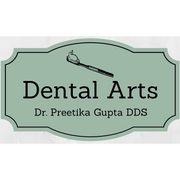
Dental insurance helps you pay for the care you need. It provides you access to a dentist who can assist you in maintaining your oral health. There are dental insurance plans for children, adults, and seniors that are designed to offer the most coverage for the least amount of money. Understanding the different plans available can help you decide what works best for you and your family.
What’s Dental Insurance & How Does It Work?
Dental insurance is like medical insurance. Depending on the service you need, the insurance will cover all, some, or none of the cost. Like your medical plan, you’ll pay a monthly premium to keep your coverage. If you're receiving dental insurance from an employer, the premium comes out of your paycheck.
 There’s also an annual deductible you’ll have to meet. A deductible is the amount of money you have to spend out-of-pocket on a dental service before the insurance company pays the rest.
There’s also an annual deductible you’ll have to meet. A deductible is the amount of money you have to spend out-of-pocket on a dental service before the insurance company pays the rest.
With some plans, you won’t be allowed to see a dentist outside of your network. If you do, the money you pay won’t count towards your deductible.
Depending on the plan, your deductible will either reset every January or annually on the date you signed up.
Some insurance plans offer cost-sharing options, like copays or coinsurances. They can be offered together or separately. With these options, you share the cost of dental treatments together, which will keep your premium rates low.
A copay is the doctor's fee. It’s a flat rate that doesn’t depend on the service you receive. Some insurance plans cover the copay while others don't.
With coinsurance, you’ll pay an established percentage of the medical bill while the insurance covers the rest.
What Are the Different Types of Dental Insurance?
Employers usually provide one of several dental insurance plans.
- Dental Health Maintenance Organization (DHMO): In health insurance terms, this plan is like an HMO. They have the lowest premiums and no deductibles. If you stay with a dentist in your network, services are either entirely covered by the insurance or are billed at a significantly reduced rate. You’ll only be billed a copay on the day of your visit. There’s also no annual maximum, so your procedures will be covered regardless of its classification. They’re sometimes called Capitation Plans by employers.
- Dental Preferred Provider Organization (DPPO): This plan has a higher deductible than a DHMO, but allows you to see your choice of dentist, even if they’re out-of-network. If you see an out-of-network dentist, you’ll be covered, but at a lower rate.
- Indemnity Plan: This is a fee-for-service plan that allows you to see any dentist you like, in- or out-of-network with no difference in coverage or price. You’ll pay for the cost of the care upfront and file a claim with your provider. They'll reimburse you some or all of the amount you spent, depending on the service.
- Table or Schedule of Allowances: This is a form of Indemnity Plan that has a set amount for every procedure. If the amount of the procedure is more than what the plan offers, you’re responsible for paying the remaining total. It’s also sometimes added to DPPO plans to limit the amount charged for dental care, which can save you money.
- Direct Reimbursement (DR): This plan is like the Indemnity Plan. The difference is that the reimbursement you receive is based on the amount of money you spent rather than the care your dentist provided.
- Exclusive Provider Organizations (EPO): You’ll be reimbursed if you use an in-network dentist.
To calculate out-of-pocket fees, providers use a guideline called Usual, Customary, and Reasonable (UCR). The UCR bases fees on identical or similar procedures based in a geographical area. For example, you have a crown put in by an out-of-network dentist in Wyandanch. Your provider might base its fee on how much other providers charge for out-of-network crown procedures in Wyandanch, New York State, or regionally.
How Are Children & Seniors Covered?
Children
While all employer plans are different, you can probably include your children in your dental plan as dependents. Most plans cover preventative and restorative procedures. Other plans offer comprehensive insurance, covering emergency and corrective procedures as well. Most dental plans fully cover fluoride treatments for children.
 The Affordable Care Act (ACA) requires employers to provide coverage to employees’ children until the age of 26, even if the adult children are living on their own or married. However, your children’s spouse and their children can’t be covered under the plan. If your employer doesn’t offer dental coverage, insurance plans for your children can be purchased through the ACA exchange.
The Affordable Care Act (ACA) requires employers to provide coverage to employees’ children until the age of 26, even if the adult children are living on their own or married. However, your children’s spouse and their children can’t be covered under the plan. If your employer doesn’t offer dental coverage, insurance plans for your children can be purchased through the ACA exchange.
- Embedded Plans: These offer both medical and dental coverage. In New York State, ACA-embedded plans allow children to remain covered until age 26.
- Bundled Plans: While provided through the same carrier, these are separate medical and dental plans. Each plan will have a different cost-sharing requirement. Bundled plans sometimes offer premium discounts for dental and medical coverage.
- Stand-Alone Plans: These are similar to bundled plans. However, your premiums, medical, and dental coverage costs are completely separate from each other.
Children can also receive coverage through Medicaid and the Children’s Health Insurance Program (CHIP). It provides free or low-cost coverage. Children can be enrolled for year-round coverage or through insurance exchanges. The type of plan depends on parental income.
Seniors
If you’re on Medicare, you can still receive dental insurance. You can purchase the plans listed above, or use one of the plans offered by Medicare.
- Medicare Advantage (Part C): Medicare Part A and B don’t offer dental benefits. However, Part C includes routine dental along with vision and prescription drug coverage.
- Medicare Supplement Plan: This is also known as a Medigap plan. They help cover the costs of deductibles, copays, and coinsurance. You must over 65 years old and already enrolled in Medicare Part A and B to apply.
What Dental Procedures Are Covered?
Dental care is broken down into four classes, each with different services. The first class covers basic diagnostic care, and insurers cover it at the highest percentage. If the procedure you need is in a higher class, it’s covered at a lower percentage. For example, most insurance plans follow the 100-80-50 structure.
 Class I covers preventative care procedures like cleanings and x-rays. Your plan will cover Class I procedures at the highest rate—sometimes at 100%, meaning the insurance company pays for all of it. This encourages you to seek preventative care. By maintaining a routine cleaning and diagnostic schedule, you decrease the likelihood of needing procedures in the following classes.
Class I covers preventative care procedures like cleanings and x-rays. Your plan will cover Class I procedures at the highest rate—sometimes at 100%, meaning the insurance company pays for all of it. This encourages you to seek preventative care. By maintaining a routine cleaning and diagnostic schedule, you decrease the likelihood of needing procedures in the following classes.
Class II are common procedures, including fillings, tooth extractions, and root canals. Depending on the plan, your insurance will likely pay for 80% of the bill.
Class III are major procedures, including crowns, bridges, and dentures. Most Class III procedures are covered at 50%.
Class IV procedures are handled differently. These procedures are usually covered under a lifetime maximum instead of an annual maximum. The coverage is often only for children under the age of 19 who have orthodontia—a misalignment of the teeth or jaw. This includes overbites, underbites, and abnormally spaced teeth. Class IV procedures use braces or Invisalign® trays to correct cases of orthodontia.
You can also save more money by setting up a Flexible Spending Account (FSA) that’s available in some insurance plans. It allows for reimbursement for deductibles, copays, and several Class I thru Class III procedures.
How Do I Benefit From Dental Insurance?
 With insurance, you can make routine visits to your dentist, who can provide preventative or restorative care. Most people choose to ignore minor issues like plaque build-up, toothaches, or inflamed gums. In fact, tooth decay among children is increasing despite the growing awareness and advanced care available.
With insurance, you can make routine visits to your dentist, who can provide preventative or restorative care. Most people choose to ignore minor issues like plaque build-up, toothaches, or inflamed gums. In fact, tooth decay among children is increasing despite the growing awareness and advanced care available.
Bacteria from decaying teeth can enter the lungs, causing respiratory infections. Swollen gums can turn into gum disease, which can clog the arteries of the heart. Plaque build-up can lead to gingivitis, and its bacteria can enter the brain, causing a stroke.
In the most severe cases, gum disease has been linked to several types of cancer.
Plaque build-up, tooth decay, and gum disease are conditions that can be treated or avoided with periodic dental cleanings. It’s when they’re ignored that they develop into serious conditions.
Dental Arts accepts many insurance plans so they can provide the dental care you need. Whether it’s restorative or preventative, they’re dedicated to helping you find your smile again. For more than 10 years, their dentist, Dr. Preetika Gupta, has provided compassionate and comprehensive care to the people of Huntington Station and Wyandanch, NY. For more information on their services, including their Preventive Program and Invisalign® aligners, visit their website. To make an appointment at their Huntington Station office, call (631) 591-9200; for Wyandanch call, (631) 643-3800.
About the Business
Have a question? Ask the experts!
Send your question

